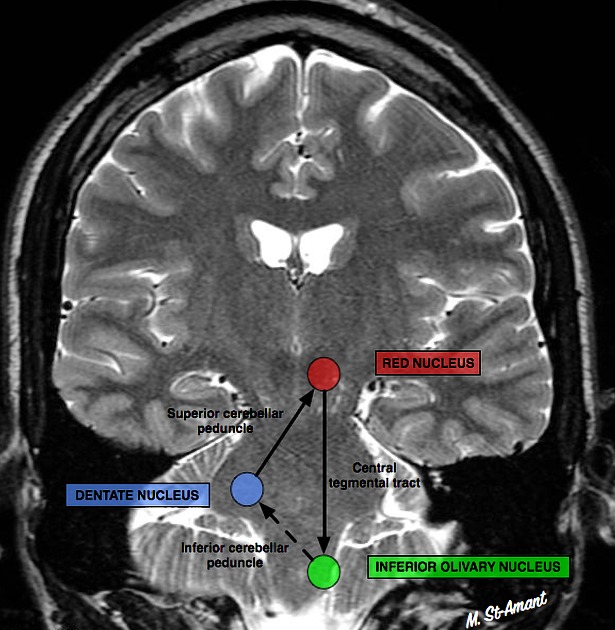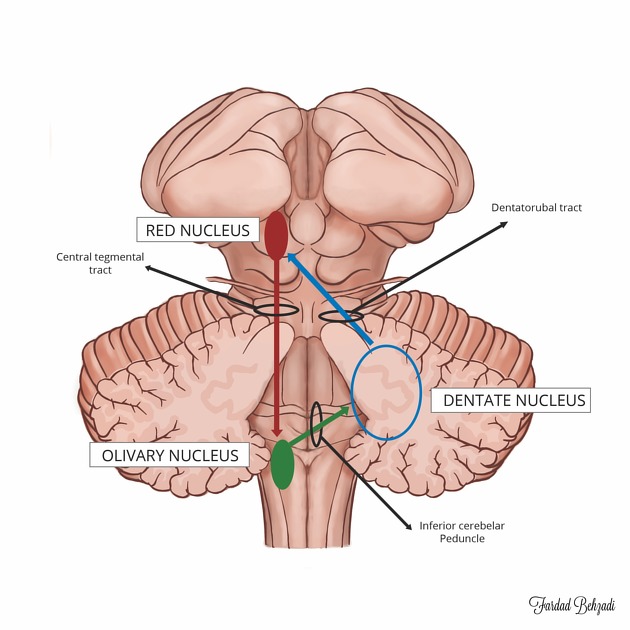The triangle of Guillain and Mollaret, also known as the dentatorubro-olivary pathway, has three corners 1:
contralateral dentate nucleus
Rubro-olivary fibers descend from the parvocellular division of each red nucleus along the central tegmental tracts to reach the capsule (amiculum) of the ipsilateral inferior olivary nucleus (ION). From the ION, olivocerebellar fibers cross the contralateral inferior cerebellar peduncle to reach cerebellar cortex, then pass from cerebellar cortex to the contralateral dentate nucleus. Dentatorubral fibers then ascend via the contralateral superior cerebellar peduncle, decussate in the midbrain, and return to the original red nucleus 1.
No direct connecting tract is present between the inferior olivary nucleus and contralateral dentate nucleus 1.
History and etymology
The pathway was described in 1931 by the French neurologists Georges Charles Guillain (1876-1961) and Pierre Mollaret (1898-1987) 2,3. They are also known respectively for defining what is now known as Guillain-Barré syndrome and Mollaret meningitis.
Related pathology
-
hypertrophic olivary degeneration, manifest as palatal myoclonus
contralateral to lesions of the superior cerebellar peduncle
ipsilateral to lesions of the central tegmental tract
-
cerebellar atrophy
contralateral to lesions of the olivocerebellar fibers
Holmes tremor (double lesions in both the dentatorubral-olivary system and dopaminergic nigrostriatal system) 4






 Unable to process the form. Check for errors and try again.
Unable to process the form. Check for errors and try again.